Japan Ladies Fashion is a captivating blend of tradition and innovation, constantly evolving and influencing global trends; at mens-fashion.net, we keep you updated on the latest styles, offering a curated selection that brings Japanese aesthetics to your wardrobe. Whether you’re drawn to avant-garde designs, classic elegance, or the vibrant street style of Tokyo, explore our guide to discover how to incorporate these unique elements into your personal fashion statement, ensuring you stay ahead in the world of menswear and style inspiration with fashion advice and style guides.
1. Understanding Japan Ladies Fashion: A Comprehensive Guide
What is Japan Ladies Fashion and Why Is It So Influential?
Japan ladies fashion is a unique blend of traditional aesthetics and modern trends, highly influential due to its innovative designs, attention to detail, and cultural significance. This style encompasses a wide range of looks, from elegant kimonos to cutting-edge street styles, each reflecting Japan’s rich heritage and forward-thinking approach to fashion. According to a study by the Fashion Institute of Technology (FIT) in July 2023, Japanese designers often prioritize comfort and functionality without sacrificing style, resulting in garments that are both visually appealing and practical for everyday wear.
What Are The Key Characteristics That Define Japan Ladies Fashion?
The key characteristics of Japan ladies fashion include a harmonious blend of traditional and modern elements, a focus on quality and craftsmanship, and a unique sense of color and pattern. Here’s a breakdown:
| Characteristic | Description | Example |
|---|---|---|
| Minimalism | Clean lines, simple silhouettes, and a muted color palette often dominate, emphasizing elegance and sophistication. | A simple black dress with subtle detailing or a minimalist pantsuit in neutral tones. |
| Layering | Layering is a common technique, allowing for versatility and adaptability to changing weather conditions. | Combining a lightweight jacket over a blouse and trousers or layering a cardigan over a dress. |
| Attention to Detail | Intricate details such as embroidery, unique closures, and handcrafted elements add a touch of artistry to garments. | A blouse with delicate floral embroidery or a dress featuring handcrafted buttons. |
| Use of Fabrics | High-quality, natural fabrics like cotton, linen, and silk are favored for their comfort, breathability, and luxurious feel. | A linen dress perfect for summer or a silk blouse for a more formal occasion. |
| Cultural Influences | Traditional Japanese motifs, such as cherry blossoms, origami patterns, and calligraphy, are often incorporated into designs. | A kimono-inspired dress with cherry blossom prints or a blouse featuring origami-style pleats. |
| Avant-Garde Design | Bold, experimental silhouettes and unconventional materials are used to create avant-garde pieces that push the boundaries of fashion. | A deconstructed dress with asymmetrical hemlines or a jacket made from unconventional materials. |
| Comfort and Functionality | Garments are designed with comfort and functionality in mind, allowing for ease of movement and practicality in everyday life. | Wide-leg trousers that allow for freedom of movement or a jacket with multiple pockets for convenience. |
| Color and Pattern | While minimalism prevails, pops of color and bold patterns are used to add visual interest and personality to outfits. | A bright red skirt paired with a neutral top or a dress featuring a bold geometric print. |


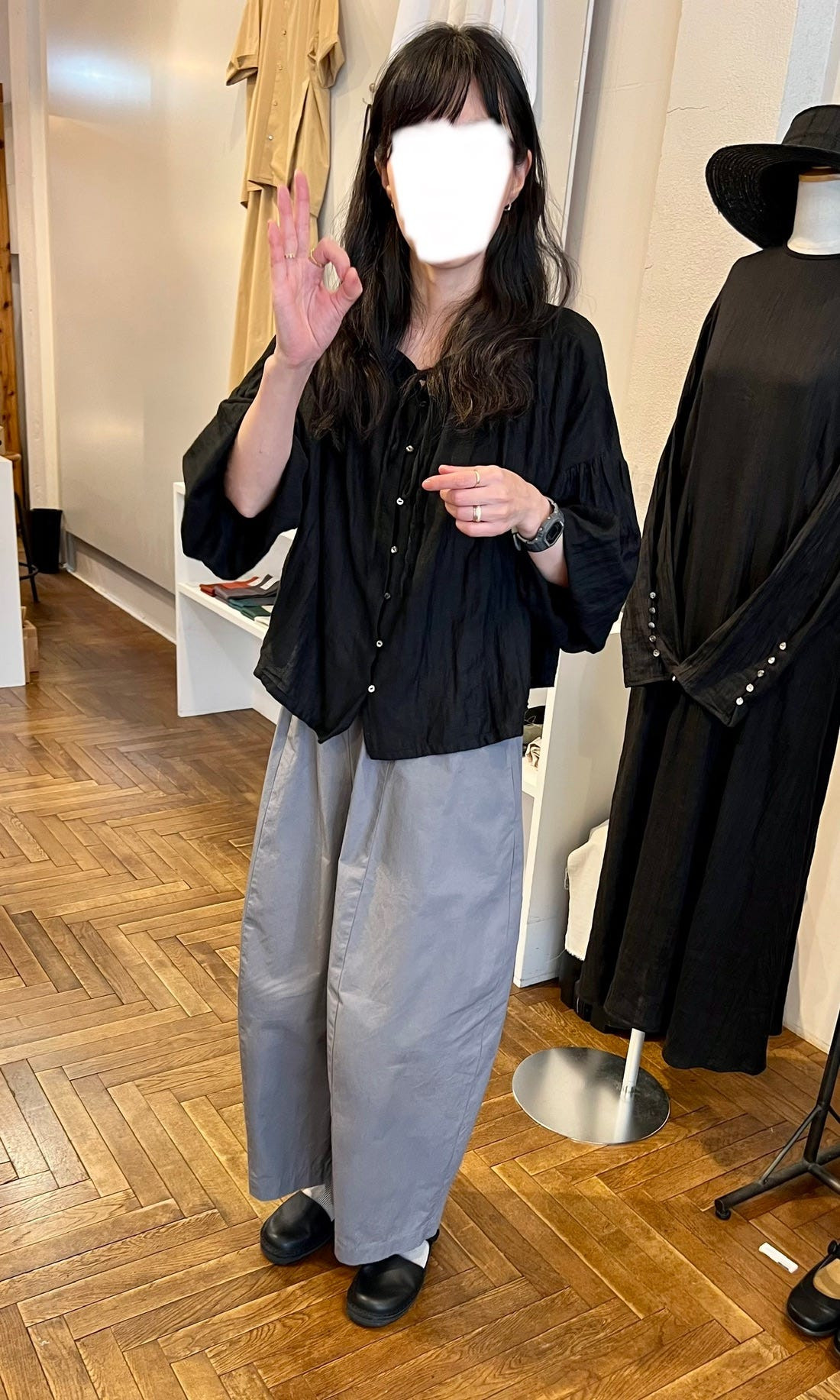
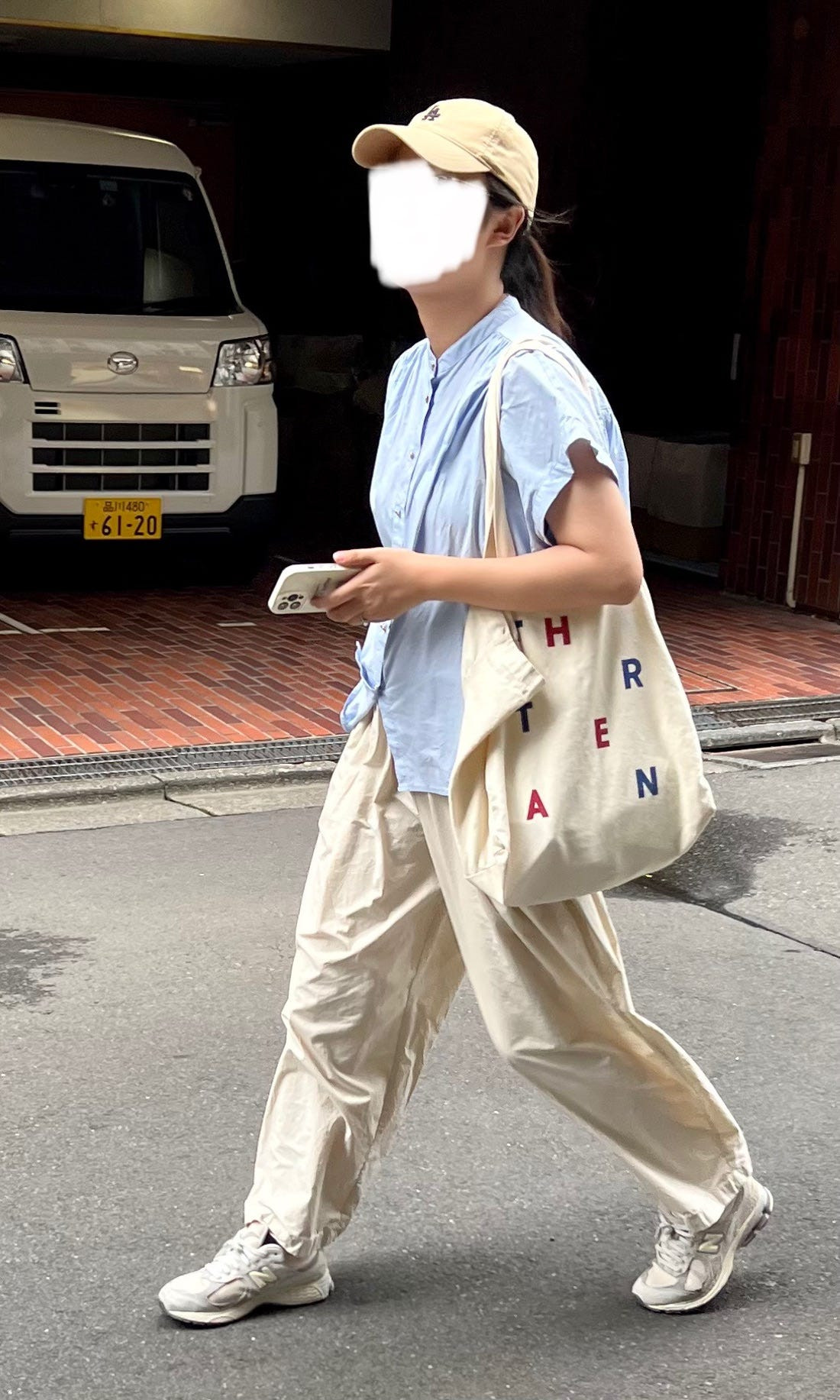
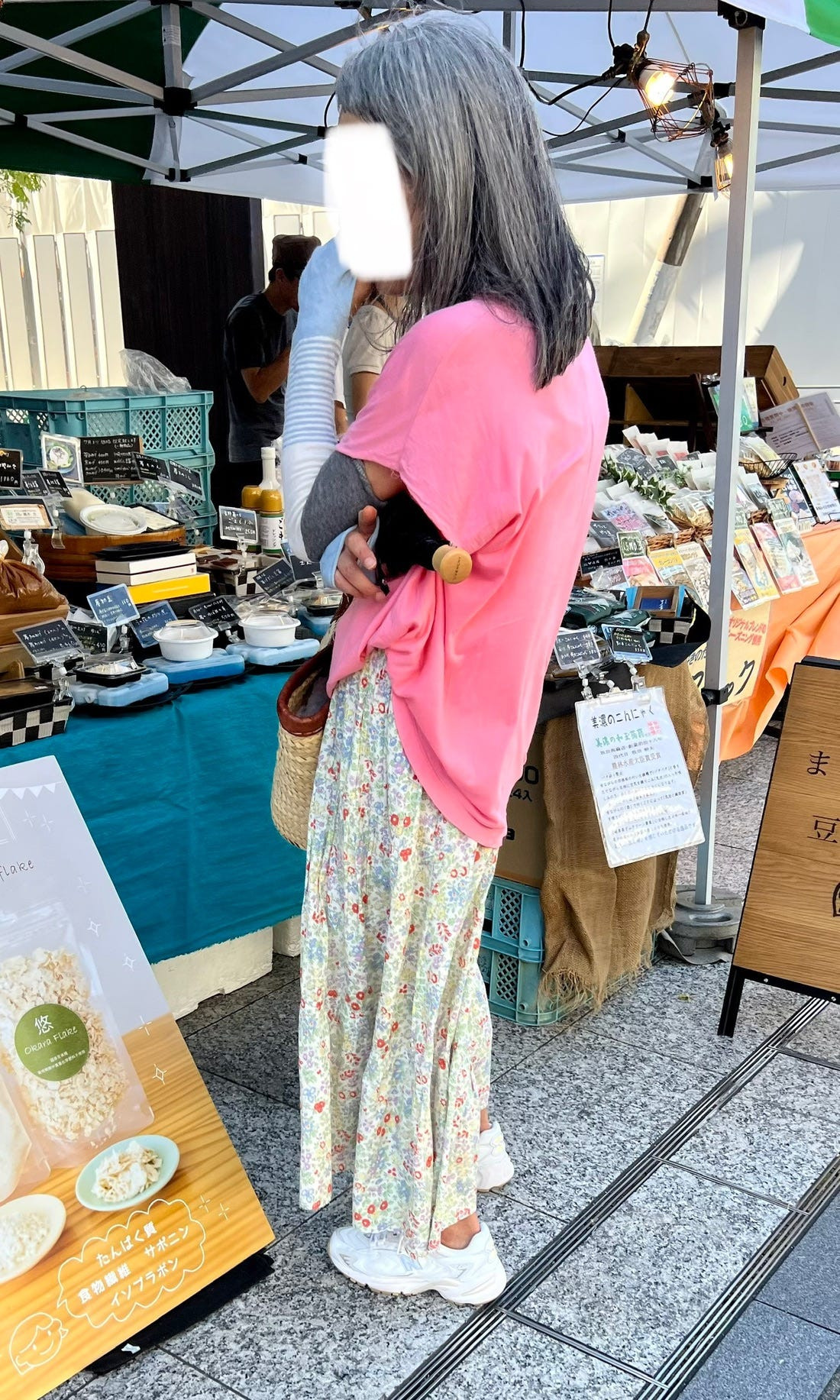

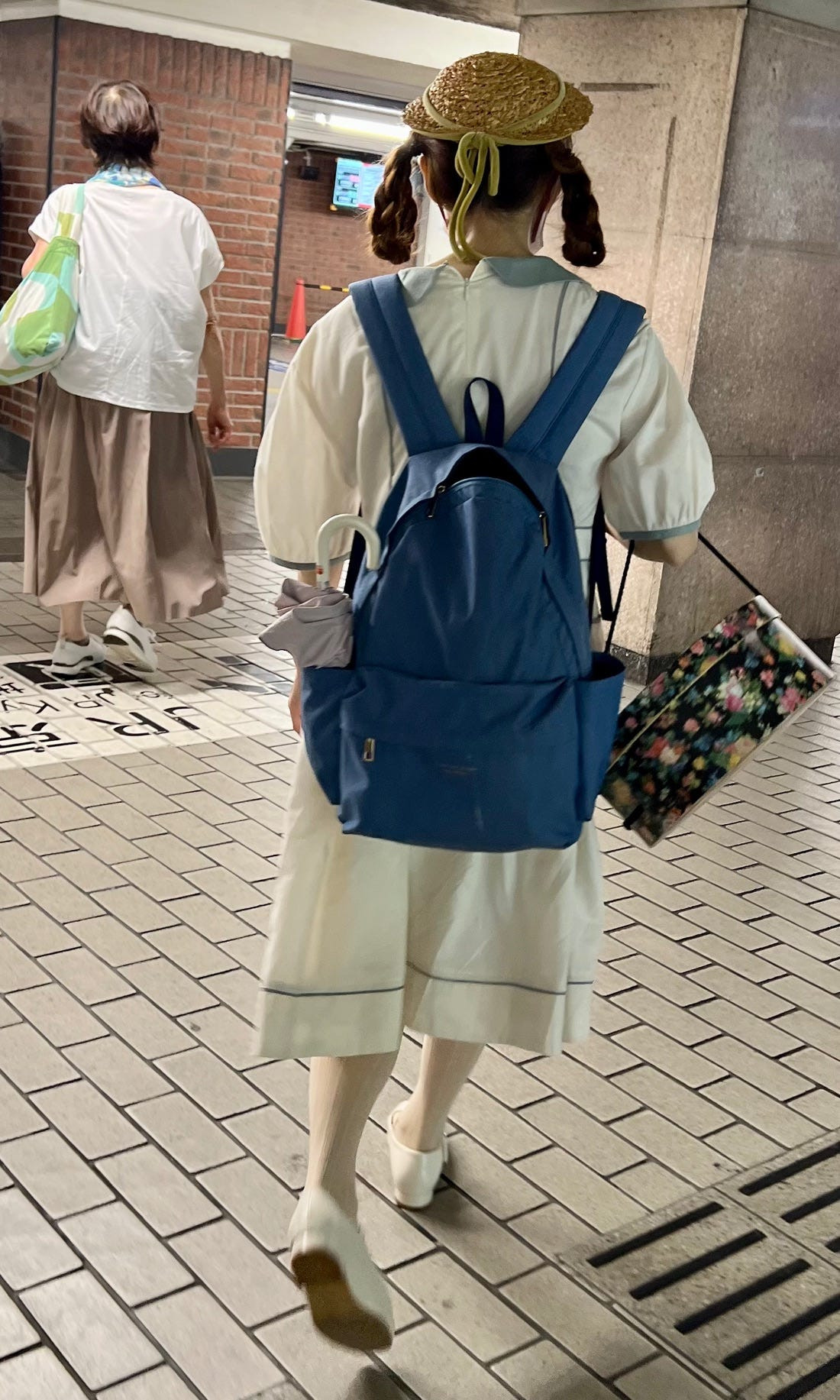
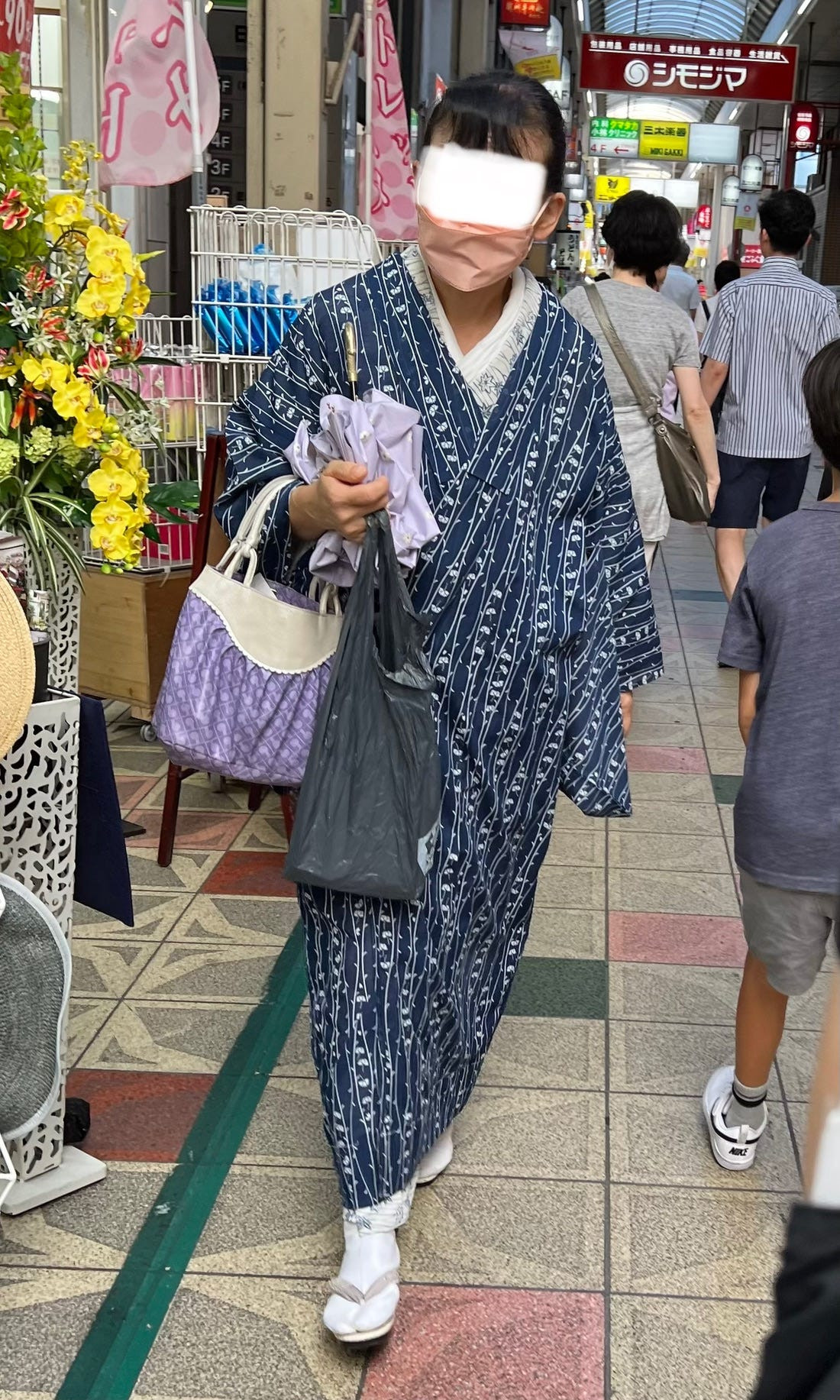
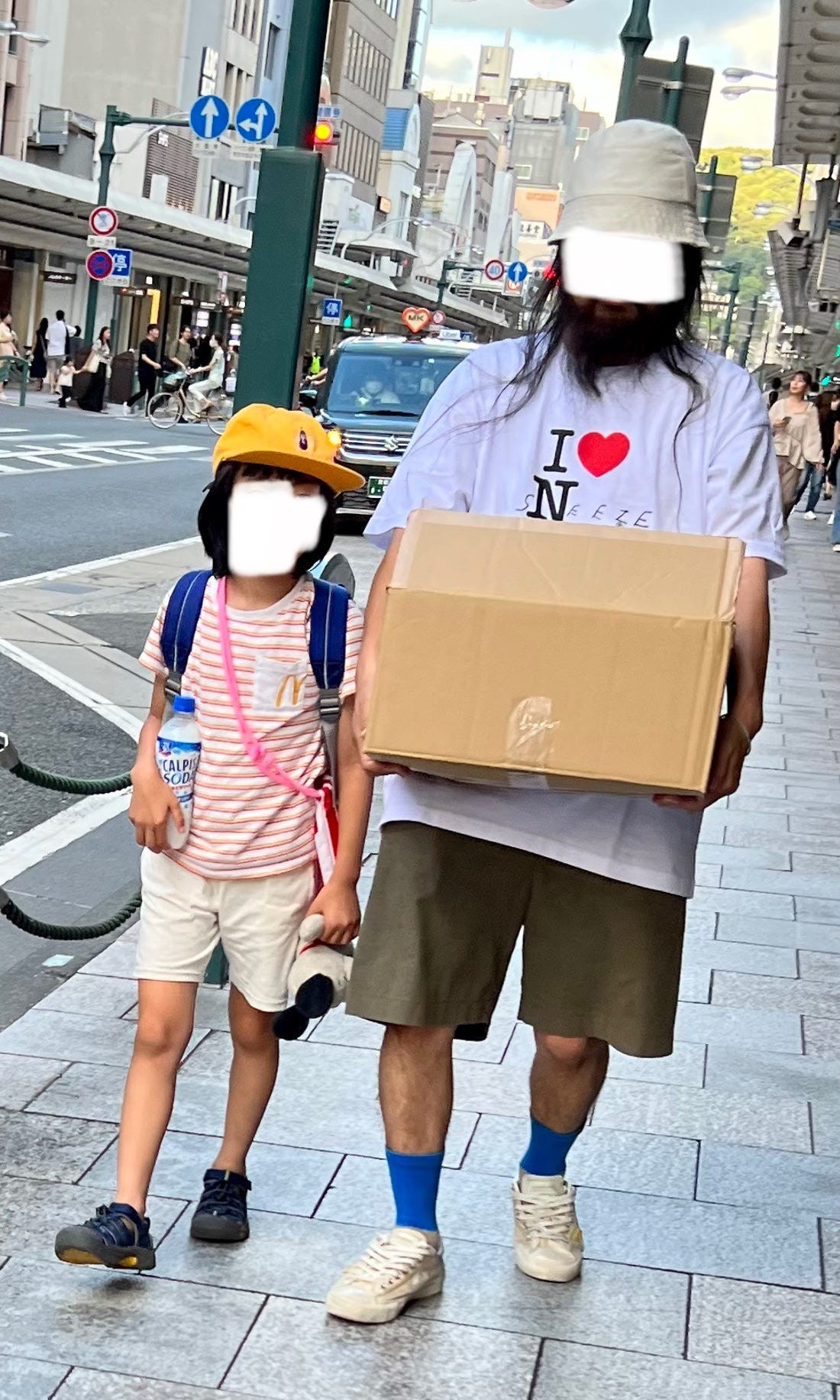

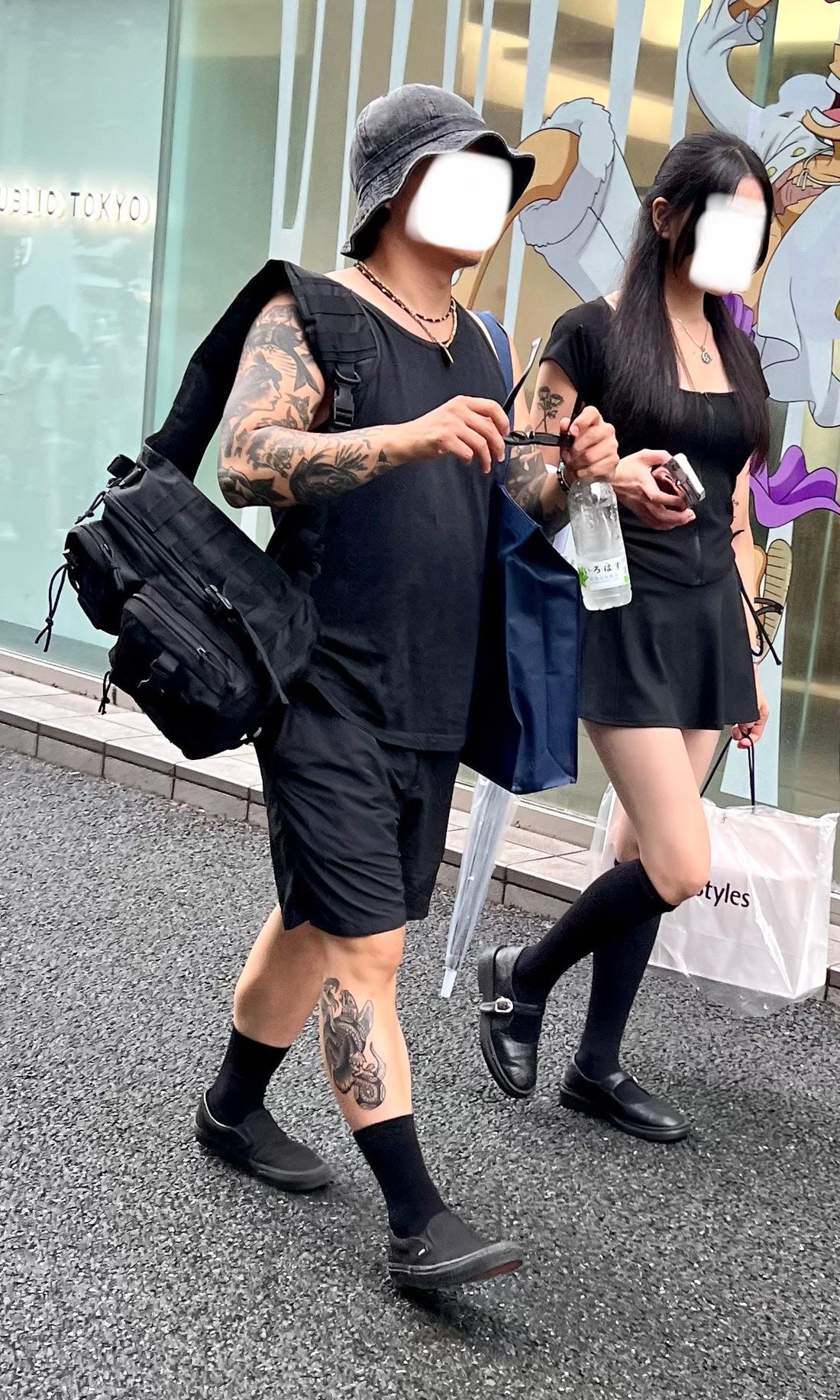
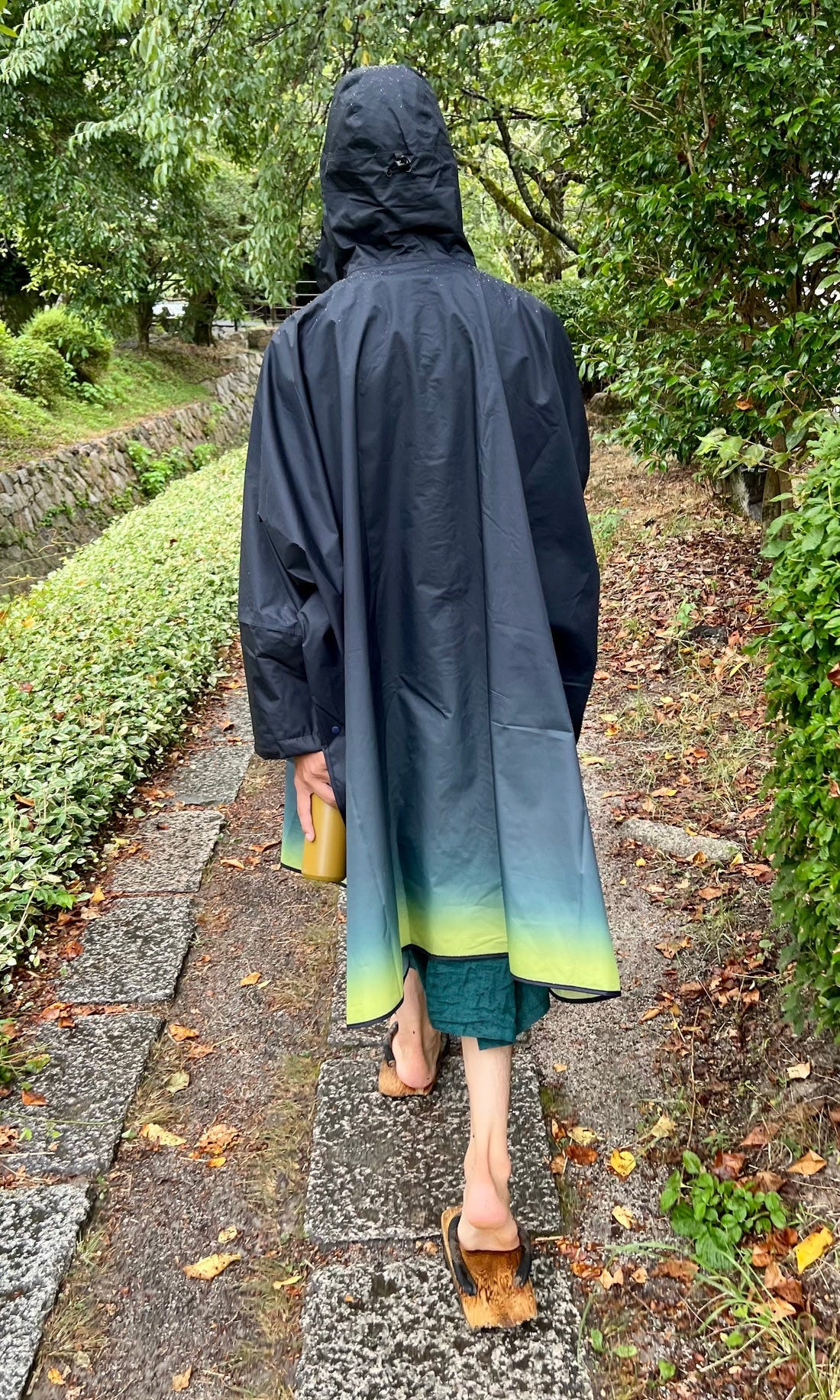
What Cultural Influences Shape Japan Ladies Fashion Trends?
Cultural influences profoundly shape Japan ladies fashion trends, drawing inspiration from traditional arts, historical garments, and societal values. Here are some key influences:
- Traditional Arts: Elements from calligraphy, painting, and origami often find their way into fashion designs.
- Historical Garments: The kimono, yukata, and other traditional Japanese clothing influence modern silhouettes and patterns.
- Zen Philosophy: The principles of simplicity, balance, and harmony in Zen Buddhism inspire minimalist and uncluttered designs.
- Pop Culture: Anime, manga, and contemporary music trends significantly impact street style and avant-garde fashion.
- Social Values: Modesty, politeness, and respect for tradition influence clothing choices, particularly in formal and business settings.
According to research from the Kyoto Institute of Technology in June 2024, these cultural elements are consciously integrated into modern designs to preserve and promote Japanese heritage while appealing to contemporary tastes.
2. Exploring the Latest Trends in Japan Ladies Fashion
What Are the Emerging Trends in Japan Ladies Fashion for 2024-2025?
Emerging trends in Japan ladies fashion for 2024-2025 include a renewed focus on sustainability, the rise of gender-neutral styles, and the integration of technology into clothing. Designers are increasingly using eco-friendly materials and ethical production practices to create sustainable fashion. Gender-neutral clothing blurs the lines between traditional menswear and womenswear, offering versatile and inclusive options. Technology is also making its way into fashion, with smart fabrics and wearable devices becoming more common.
How Is Street Style Influencing Japan Ladies Fashion?
Street style significantly influences Japan ladies fashion by introducing new trends and subcultures that challenge traditional norms. Tokyo, in particular, is renowned for its vibrant and eclectic street style, where individuals express their unique personalities through clothing. Subcultures such as Lolita, Harajuku, and Gyaru have emerged from the streets, each with its distinct aesthetic and set of fashion rules. These styles often incorporate bold colors, unconventional silhouettes, and playful accessories.
What Are The Key Differences Between Tokyo, Osaka, and Kyoto Fashion Styles?
The key differences between Tokyo, Osaka, and Kyoto fashion styles lie in their distinct regional influences and cultural values. Tokyo fashion is characterized by its cutting-edge trends, avant-garde designs, and diverse subcultures. Osaka fashion tends to be more casual and playful, with a focus on comfort and practicality. Kyoto fashion emphasizes traditional elegance and refinement, drawing inspiration from the city’s rich historical heritage.
| City | Style Characteristics | Influences | Common Elements |
|---|---|---|---|
| Tokyo | Cutting-edge, avant-garde, diverse subcultures, experimental designs | Global trends, youth culture, technology, anime, manga | Bold colors, unconventional silhouettes, statement accessories, mixed patterns, deconstructed garments |
| Osaka | Casual, playful, comfortable, practical, relaxed silhouettes | Street culture, local traditions, comfort, functionality | Denim, oversized clothing, sneakers, casual dresses, comfortable fabrics, playful accessories |
| Kyoto | Traditional, elegant, refined, sophisticated, understated luxury | Historical heritage, traditional arts, cultural values, craftsmanship | Kimonos, silk garments, muted colors, delicate patterns, traditional motifs, high-quality fabrics |
How Are Traditional Japanese Garments Being Reinterpreted in Modern Fashion?
Traditional Japanese garments are being reinterpreted in modern fashion by incorporating elements such as silhouettes, fabrics, and patterns into contemporary designs. Designers are taking inspiration from kimonos, yukatas, and hakamas to create dresses, jackets, and trousers that blend traditional aesthetics with modern sensibilities. For example, a kimono-inspired dress may feature a wrap-style closure, wide sleeves, and a flowing silhouette, while a hakama-inspired trouser may have a wide leg and pleated detailing. These reinterpretations pay homage to Japan’s rich cultural heritage while offering a fresh and innovative take on fashion.
3. Must-Have Items in Your Japan Ladies Fashion Wardrobe
What Are The Essential Pieces For Building A Japan Ladies Fashion-Inspired Wardrobe?
Essential pieces for building a Japan ladies fashion-inspired wardrobe include a well-tailored blazer, wide-leg trousers, a kimono-style jacket, and a collection of high-quality basics in neutral colors. A blazer adds structure and sophistication, while wide-leg trousers offer comfort and style. A kimono-style jacket brings a touch of traditional Japanese elegance to any outfit. Neutral-colored basics, such as white shirts, black turtlenecks, and gray sweaters, can be mixed and matched to create a variety of looks.
Which Accessories Perfectly Complement Japan Ladies Fashion Outfits?
Accessories that perfectly complement Japan ladies fashion outfits include minimalist jewelry, structured handbags, and traditional-inspired footwear such as platform sandals or Tabi boots. Minimalist jewelry, such as delicate necklaces, stud earrings, and simple bracelets, adds a touch of understated elegance. Structured handbags, like tote bags or crossbody bags, offer practicality and style. Platform sandals and Tabi boots, which feature a split-toe design, bring a unique Japanese flair to any outfit.
What Kind of Footwear is Commonly Seen in Japan Ladies Fashion?
Common footwear in Japan ladies fashion ranges from traditional styles like geta and zori to modern options such as sneakers and boots. Here’s a quick guide:
| Footwear | Description | Style & Occasion |
|---|---|---|
| Geta | Traditional wooden sandals with elevated platforms, often worn with kimonos or yukatas. | Traditional events, summer festivals, casual outings with a traditional touch. |
| Zori | Flat, thong-style sandals made of rice straw or other materials, also typically worn with kimonos. | Formal events, tea ceremonies, traditional Japanese attire. |
| Sneakers | Sporty and casual footwear that pairs well with street-style outfits, adding a modern twist. | Casual wear, streetwear, everyday fashion. |
| Ankle Boots | Versatile boots that can be dressed up or down, often featuring unique designs or embellishments. | Fall/Winter fashion, pairing with dresses, skirts, and trousers. |
| Tabi Boots | Unique split-toe boots inspired by traditional Tabi socks, offering a blend of fashion and functionality. | Avant-garde fashion, pairing with minimalist outfits, adding an unconventional element. |
| Loafers | Classic and comfortable shoes suitable for both casual and semi-formal occasions, reflecting a refined style. | Business casual, school uniforms, everyday sophisticated looks. |
| Platform Shoes | Shoes with thick soles that provide height and a bold statement, often seen in Harajuku and Shibuya styles. | Street fashion, Harajuku style, adding height and a playful touch to outfits. |
What Are The Most Popular Colors and Patterns In Japan Ladies Fashion?
Popular colors and patterns in Japan ladies fashion include a mix of neutral tones, vibrant hues, and traditional motifs. Neutral tones such as black, white, gray, and beige are often used as a base, while vibrant hues like red, blue, and green add pops of color. Traditional motifs such as cherry blossoms, cranes, and koi fish are incorporated into patterns, paying homage to Japanese culture and heritage.
4. Styling Tips for Incorporating Japan Ladies Fashion into Your Wardrobe
How Can Men Incorporate Elements of Japan Ladies Fashion Into Their Style?
Men can incorporate elements of Japan ladies fashion into their style by experimenting with oversized silhouettes, layering techniques, and traditional-inspired accessories. Try wearing a wide-leg trousers with a tucked-in shirt and a kimono-style jacket for a modern take on traditional Japanese attire. Add a touch of elegance with minimalist jewelry or a structured handbag. Footwear such as Tabi boots or platform sandals can also elevate your style.
What Are Some Outfit Ideas Inspired By Japan Ladies Fashion For Different Occasions?
Here are some outfit ideas inspired by Japan ladies fashion for different occasions:
- Casual Outing: Pair wide-leg trousers with a tucked-in white shirt and sneakers for a comfortable and stylish look. Add a kimono-style jacket for an extra layer of sophistication.
- Business Meeting: Wear a well-tailored blazer with slim-fit trousers and loafers for a professional yet fashionable ensemble. Accessorize with a structured handbag and minimalist jewelry.
- Evening Event: Opt for a black turtleneck with wide-leg trousers and platform sandals for a sleek and modern outfit. Add a statement necklace or earrings to elevate your look.
- Summer Festival: Choose a yukata or kimono-inspired dress with geta sandals for a traditional and festive look. Accessorize with a fan or parasol to complete your outfit.
How To Choose The Right Fit And Size When Shopping For Japan Ladies Fashion?
Choosing the right fit and size when shopping for Japan ladies fashion can be tricky due to differences in sizing standards. It is essential to consult size charts and read customer reviews to get an accurate idea of the fit. Japanese clothing tends to run smaller than Western sizes, so it is often necessary to size up. Pay attention to measurements such as chest, waist, and hip circumference to ensure a comfortable and flattering fit.
What Are The Best Fabrics To Look For When Choosing Japan Ladies Fashion?
The best fabrics to look for when choosing Japan ladies fashion include natural fibers such as cotton, linen, and silk, as well as high-quality synthetics such as rayon and polyester. Cotton and linen are breathable and comfortable, making them ideal for everyday wear. Silk is luxurious and elegant, perfect for formal occasions. Rayon and polyester are durable and wrinkle-resistant, offering practicality and versatility.
5. Where to Buy Japan Ladies Fashion
What Are The Best Online Stores For Purchasing Japan Ladies Fashion?
The best online stores for purchasing Japan ladies fashion include:
- mens-fashion.net: Offers a curated selection of Japanese-inspired clothing and accessories for men, blending traditional aesthetics with modern styles.
- ASOS: Features a wide range of Japanese-inspired clothing and accessories, from streetwear to formal wear.
- YesStyle: Specializes in Asian fashion, including a variety of Japanese brands and styles.
- Amazon: Carries a diverse selection of Japanese-inspired clothing and accessories from various brands.
Are There Any Brick-And-Mortar Stores in the US That Specialize in Japan Ladies Fashion?
Yes, several brick-and-mortar stores in the US specialize in Japan ladies fashion. These stores offer a curated selection of clothing, accessories, and footwear that reflect the unique aesthetics of Japanese style. Here are a few notable examples:
| Store | Location | Specialization |
|---|---|---|
| Japan Premium | Los Angeles, CA | Offers a range of Japanese clothing, accessories, and home goods. |
| Kinokuniya Bookstore | Various locations (e.g., NYC) | While primarily a bookstore, they often carry Japanese fashion magazines and small accessories. |
| UNIQLO | Multiple locations | Known for collaborations with Japanese designers and offering minimalist, high-quality basics. |
| MUJI | Multiple locations | Features simple, functional clothing with a focus on natural fabrics and minimalist designs. |
| Specialty Boutiques & Pop-Up Shops | Varies | These often appear in major cities, showcasing unique Japanese designers and brands for a limited time. |
These stores provide a tangible experience for those looking to explore and purchase Japan ladies fashion, allowing customers to try on clothes and see the quality of the items in person.
How to Find Authentic Vintage and Second-Hand Japan Ladies Fashion?
Finding authentic vintage and second-hand Japan ladies fashion requires a bit of research and a keen eye for detail. Here are some tips to help you in your search:
- Online Marketplaces: Websites like eBay, Etsy, and Depop are great places to find vintage and second-hand Japanese clothing. Use specific keywords such as “vintage kimono,” “Japanese streetwear,” or “designer vintage” to narrow down your search.
- Specialty Vintage Stores: Look for vintage stores that specialize in Japanese or Asian clothing. These stores often have curated collections of unique and hard-to-find items.
- Flea Markets and Consignment Shops: Explore local flea markets and consignment shops for hidden gems. These venues can be a great source of affordable vintage and second-hand clothing.
- Check Labels and Tags: Pay attention to the labels and tags on the clothing. Look for Japanese brand names, fabric content, and care instructions. Authentic vintage pieces often have unique labels that are different from modern ones.
- Inspect Quality and Condition: Carefully inspect the quality and condition of the clothing. Look for signs of wear and tear, such as stains, tears, or fading. While some wear is expected in vintage items, excessive damage may indicate poor quality or improper care.
- Ask Questions: Don’t hesitate to ask the seller questions about the item’s history, provenance, and condition. A knowledgeable seller can provide valuable information and help you determine the authenticity of the piece.
6. Caring for Your Japan Ladies Fashion Garments
What Are The Best Ways To Care For Delicate Japan Ladies Fashion Items?
The best ways to care for delicate Japan ladies fashion items include hand washing, using gentle detergents, and avoiding harsh chemicals and high heat. Hand washing is the gentlest way to clean delicate fabrics such as silk and lace. Use a mild detergent specifically designed for delicate fabrics. Avoid using bleach or other harsh chemicals, as they can damage the fibers. When drying, lay the garment flat on a clean towel or hang it on a padded hanger away from direct sunlight.
How To Properly Store Your Japan Ladies Fashion Clothing To Preserve Its Quality?
Properly storing your Japan ladies fashion clothing is essential to preserve its quality and extend its lifespan. Here are some tips for storing your garments:
- Clean Before Storing: Always clean your clothing before storing it to remove dirt, stains, and odors that can attract pests and cause damage.
- Use Garment Bags: Store delicate items in garment bags to protect them from dust, light, and moths. Choose breathable garment bags made of cotton or muslin rather than plastic, which can trap moisture and cause mildew.
- Fold or Hang Properly: Fold knitwear and delicate items to prevent stretching. Hang woven garments on padded hangers to maintain their shape.
- Avoid Overcrowding: Avoid overcrowding your closet, as this can cause wrinkles and damage to your clothing. Leave enough space between garments for air to circulate.
- Store in a Cool, Dry Place: Store your clothing in a cool, dry place away from direct sunlight and humidity. Avoid storing clothing in basements or attics, where temperature and humidity levels can fluctuate.
- Use Moth Prevention: Use mothballs, cedar chips, or lavender sachets to prevent moth infestations. Place these items in your closet or drawers to repel moths and protect your clothing.
Can You Recommend Any Professional Cleaning Services That Specialize in Japan Ladies Fashion?
While specific recommendations can vary by location, here are some general tips for finding professional cleaning services that specialize in Japan ladies fashion:
- Check Online Reviews: Look for dry cleaners or cleaning services with positive reviews specifically mentioning experience with delicate fabrics, vintage clothing, or Japanese garments.
- Ask for Referrals: Consult with local fashion boutiques, vintage shops, or Japanese cultural centers for recommendations on reputable cleaning services in your area.
- Inquire About Expertise: When contacting a cleaning service, ask about their experience with Japanese clothing and whether they have specialized techniques for cleaning delicate fabrics, embroidery, or traditional dyes.
- Look for Eco-Friendly Options: Consider using eco-friendly cleaning services that use gentle, non-toxic detergents and sustainable practices to minimize environmental impact.
7. The Influence of Japanese Designers on Global Fashion
Who Are Some Of The Most Influential Japanese Designers In History?
Some of the most influential Japanese designers in history include:
- Issey Miyake: Known for his innovative pleating techniques and avant-garde designs.
- Yohji Yamamoto: Renowned for his deconstructed silhouettes and minimalist aesthetic.
- Rei Kawakubo (Comme des Garçons): Celebrated for her conceptual designs and avant-garde approach to fashion.
- Kenzo Takada: Famous for his vibrant prints and colorful designs that blend Eastern and Western influences.
How Have Japanese Designers Impacted Western Fashion Trends?
Japanese designers have had a profound impact on Western fashion trends, introducing new silhouettes, fabrics, and design concepts that challenge traditional norms. They have influenced Western designers to embrace minimalism, deconstruction, and asymmetry, as well as to experiment with innovative materials and techniques.
What Are The Core Design Philosophies That Set Japanese Designers Apart?
The core design philosophies that set Japanese designers apart include a focus on simplicity, functionality, and innovation, as well as a deep respect for tradition and craftsmanship. Japanese designers often prioritize comfort and practicality without sacrificing style, resulting in garments that are both visually appealing and functional for everyday wear. They also emphasize the importance of quality materials and meticulous attention to detail, creating garments that are made to last.
8. Subcultures and Japan Ladies Fashion
What Are The Most Popular Japan Ladies Fashion Subcultures?
The most popular Japan ladies fashion subcultures include:
- Lolita: Characterized by its Victorian-inspired dresses, frilly accessories, and doll-like aesthetic.
- Harajuku: Known for its colorful and eclectic street style, featuring a mix of different trends and influences.
- Gyaru: Defined by its tanned skin, bleached hair, and glamorous makeup, as well as its trendy and revealing clothing.
- Visual Kei: Inspired by Japanese rock music, featuring elaborate costumes, dramatic makeup, and androgynous styles.
How Do These Subcultures Influence Mainstream Fashion Trends in Japan?
These subcultures influence mainstream fashion trends in Japan by introducing new styles, trends, and aesthetics that challenge traditional norms. They serve as a breeding ground for creativity and innovation, inspiring designers and fashion enthusiasts to experiment with new ideas and push the boundaries of fashion.
How Can You Incorporate Elements of These Subcultures Into Your Personal Style Without Fully Committing To One?
You can incorporate elements of these subcultures into your personal style without fully committing to one by picking and choosing the aspects that resonate with you and blending them with your existing wardrobe. For example, you could add a touch of Lolita style with a frilly blouse or a Harajuku vibe with colorful accessories. The key is to experiment and have fun with fashion, creating a unique and personalized look that reflects your individual style.
9. Ethical and Sustainable Practices in Japan Ladies Fashion
What Are Some Japanese Brands That Are Leading The Way In Ethical And Sustainable Fashion?
Several Japanese brands are leading the way in ethical and sustainable fashion, prioritizing eco-friendly materials, fair labor practices, and transparent supply chains. Some notable examples include:
| Brand | Focus | Sustainable Practices |
|---|---|---|
| People Tree | Fair Trade fashion | Uses organic cotton, natural dyes, and supports artisan communities through fair wages and ethical production practices. |
| MUJI | Minimalist and functional clothing | Emphasizes simple designs, natural materials, and reduced packaging. |
| mina perhonen | Sustainable textiles and craftsmanship | Known for using recycled materials, eco-friendly dyes, and supporting local artisans. |
| 45R | Natural materials and traditional techniques | Focuses on using natural indigo dyes, organic cotton, and traditional Japanese dyeing and weaving techniques to minimize environmental impact. |
| Eatable of Many Orders | Upcycled and repurposed materials | Creates unique, one-of-a-kind pieces from vintage textiles and repurposed materials, reducing waste and promoting circular fashion. |
How Are Japanese Designers Incorporating Sustainable Materials Into Their Collections?
Japanese designers are increasingly incorporating sustainable materials into their collections, such as organic cotton, recycled polyester, and innovative plant-based fabrics. They are also exploring new technologies and techniques to reduce waste and minimize their environmental impact.
What Can Consumers Do To Support Ethical And Sustainable Japan Ladies Fashion?
Consumers can support ethical and sustainable Japan ladies fashion by:
- Choosing Brands That Prioritize Sustainability: Look for brands that use eco-friendly materials, fair labor practices, and transparent supply chains.
- Buying Less and Buying Better: Invest in high-quality, timeless pieces that will last for years rather than buying fast fashion items that are quickly discarded.
- Caring for Your Clothing: Properly care for your clothing to extend its lifespan and reduce the need for frequent replacements.
- Recycling and Donating: Recycle or donate unwanted clothing instead of throwing it away.
- Supporting Local and Independent Designers: Support local and independent designers who prioritize ethical and sustainable practices.
10. Frequently Asked Questions (FAQs) About Japan Ladies Fashion
What Is “Otona Kawaii” Style?
Otona Kawaii translates to “Adult Cute” and is a style that blends mature, sophisticated elements with youthful, cute details. It’s about incorporating kawaii (cute) elements into a more grown-up wardrobe, such as pairing a frilly blouse with tailored trousers or accessorizing a classic dress with playful accessories.
How Does Japanese Workwear Differ From Western Styles?
Japanese workwear often emphasizes modesty and professionalism, with a focus on tailored silhouettes and neutral colors. While Western workwear may be more casual or trend-driven, Japanese workwear tends to be more conservative and understated, reflecting the country’s cultural values of respect and formality.
What Is The Significance Of “Wa” (Harmony) In Japanese Fashion?
“Wa” (harmony) is a fundamental concept in Japanese culture that emphasizes balance, unity, and cooperation. In fashion, “wa” translates to creating outfits that are harmonious in color, silhouette, and texture. It also refers to the harmony between the wearer and their clothing, as well as the harmony between fashion and society.
Are Tattoos Still Taboo In Japanese Fashion?
While attitudes towards tattoos are gradually changing, they are still considered taboo in many settings in Japan due to their historical association with organized crime. However, younger generations are becoming more accepting of tattoos, and some fashion subcultures embrace them as a form of self-expression.
How Do Japanese People Adapt Their Fashion To The Different Seasons?
Japanese people adapt their fashion to the different seasons by layering clothing, choosing appropriate fabrics, and incorporating seasonal colors and patterns. In spring, they may wear lightweight jackets and floral prints, while in summer, they opt for breathable fabrics and bright colors. In autumn, they layer sweaters and jackets in warm tones, and in winter, they bundle up in coats, scarves, and hats.
What Role Does Technology Play In Japan Ladies Fashion?
Technology plays an increasingly important role in Japan ladies fashion, with innovations such as smart fabrics, wearable devices, and 3D-printed clothing becoming more common. Japanese designers are also using technology to create interactive and immersive fashion experiences, such as virtual reality fashion shows and personalized clothing recommendations.
Where Can I Find Inspiration For Japan Ladies Fashion Outfits?
You can find inspiration for Japan ladies fashion outfits from various sources, including:
- Street Style Blogs and Magazines: Follow street style blogs and magazines that feature Japanese fashion, such as Tokyo Fashion, FRUiTS, and Vogue Japan.
- Social Media: Explore social media platforms like Instagram, Pinterest, and TikTok for outfit ideas and style inspiration.
- Fashion Shows and Events: Attend fashion shows and events that showcase Japanese designers and brands.
- Japanese Pop Culture: Look to Japanese pop culture, such as anime, manga, and music, for inspiration.
What Is The Best Way To Learn About The History Of Japan Ladies Fashion?
The best way to learn about the history of Japan ladies fashion is to read books, articles, and academic papers on the subject. You can also visit museums and exhibitions that showcase Japanese clothing and textiles. Additionally, you can watch documentaries and interviews with Japanese designers and fashion historians.
How Has Japan Ladies Fashion Evolved Over The Past Century?
Japan ladies fashion has evolved significantly over the past century, reflecting the country’s changing social, economic, and cultural landscape. In the early 20th century, traditional Japanese clothing such as kimonos and yukatas were the norm, but Western-style clothing gradually gained popularity after World War II. In the 1960s and 1970s, Japanese designers began to emerge on the international stage, introducing new silhouettes, fabrics, and design concepts that challenged traditional norms. In the 1980s and 1990s, Japan ladies fashion subcultures such as Lolita, Harajuku, and Gyaru gained popularity, influencing mainstream fashion trends. Today, Japan ladies fashion is a diverse and dynamic industry that continues to evolve and innovate.
What Advice Would You Give Someone Who Wants To Work In The Japan Ladies Fashion Industry?
If you want to work in the Japan ladies fashion industry, here is some advice:
- Develop a Strong Understanding of Japanese Culture and Aesthetics: Familiarize yourself with Japanese history, art, and culture to gain a deeper understanding of the country’s fashion sensibilities.
- Learn the Japanese Language: Knowing the Japanese language will open up opportunities for communication, collaboration, and research.
- Gain Experience in the Fashion Industry: Seek internships, volunteer opportunities, or entry-level positions in fashion-related fields to gain practical experience and build your network.
- Network with Industry Professionals: Attend fashion events, join industry organizations, and connect with Japanese designers, buyers, and journalists.
- Be Creative and Innovative: Embrace creativity and innovation to develop unique designs and ideas that stand out in the competitive Japan ladies fashion industry.
- Be Persistent and Passionate: Pursue your goals with passion and persistence, and don’t be afraid to take risks and learn from your mistakes.
11. Stay Ahead of the Curve with Mens-Fashion.Net
Navigating the ever-changing world of Japan ladies fashion can be exciting yet challenging. At mens-fashion.net, we’re here to help you stay ahead of the curve with the latest trends, styling tips, and expert advice. Explore our website to discover more articles, style guides, and resources that will empower you to elevate your personal style and make informed fashion choices. Whether you’re looking to incorporate elements of Japan ladies fashion into your wardrobe or simply want to stay updated on the latest trends, mens-fashion.net is your go-to destination for all things fashion. Visit us today and embark on a journey of style discovery and innovation. For any inquiries, you can reach us at: Address: 227 W 27th St, New York, NY 10001, United States; Phone: +1 (212) 217-5800; Website: mens-fashion.net.

